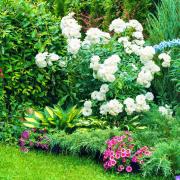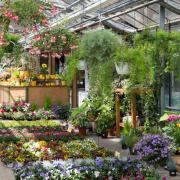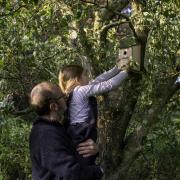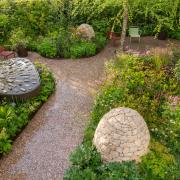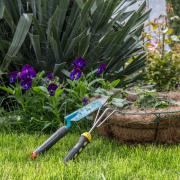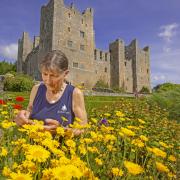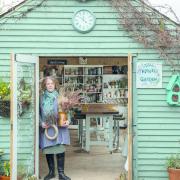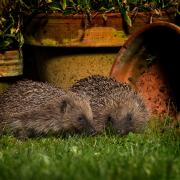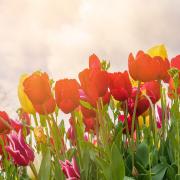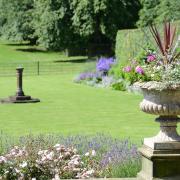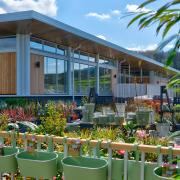Make your garden more wildlife friendly with the help of Yorkshire horticultural expert and gardener Martin Fish
Our gardens play a vital role in providing food and shelter for a wide range of wildlife. Every garden regardless of size has the potential to be a mini nature reserve and as gardeners we can benefit greatly by increasing the diversity of species that live and visit the garden.
Most creatures that venture into our garden are beneficial, but there are some we class as pests and if not controlled can do untold damage to our precious plants. The secret is to strike a balance whereby the good guys out number the bad guys.
This also applies to the way we garden. For some, the idea of attracting wildlife into the garden means allowing weeds to grow and generally letting the garden revert to a natural state.
But it is possible to have both the benefits of wildlife and an ornamental, well tended garden.
As a gardener myself I aim to have a garden that looks good and produces plenty of fresh produce for the house, but at the same time attracts and provides shelter for wildlife. The pay back is that once you have created this natural balance, birds, amphibians and other beneficial insects will help to reduce the harmful pests in the garden. It takes time and patience but it generally does happen.
In order to attract more wildlife into your garden you need to provide a few basic needs in the form or food, water and shelter.
Here are a few steps that you can take to make your garden more wildlife friendly.
Reduce the use of pesticides in the garden. This doesn’t mean that you suddenly have to become organic and use no pesticides at all. I’m not organic, but I now only use pesticides, especially insecticides, when absolutely necessary. This increases the amount of insects into the garden, many of which are beneficial. This in turn attracts more birds, beetles, frogs and toads into the garden that eat many of the insect pests on our plants.
Plant a selection of nectar rich flowers to provide a food source for pollinating insects, butterflies and bees. Plants such as Echinacea, Verbena bonariensis, crocus, buddleia, Michaelmas daisies, chives, lavender, fennel and achillea are all good at attracting insects at various times of the year. Many of these plants also have seed that is welcomed by seed-eating birds.
If you have room, plant a tree or several trees in your garden to provide perches and nesting sites for birds. Ornamental and fruit trees can both be used but ideally should also provide some food source too. Fruit trees blossom in spring and attract bees. Ornamental trees such as Rowan and crab apples have the added bonus of producing autumn fruits which provide a valuable food source.
Plant a selection of shrubs and evergreens to provide shelter and nesting sites. Many shrubs also produce nectar from their flowers, seeds and berries in the autumn. Shrubs with berries include cotoneaster, pyracantha and mahonia, all of which are a valuable food source for birds and small mammals.
Provide water in the garden. This can be a simple drinker, water feature or a small pond. It will attract a wide selection of wildlife including birds, frogs and insects. Don’t stock a wildlife pond with fish but do plant a selection of native plants around it.
Feed the birds with a high protein food to supplement the natural food in the garden. This encourages the birds to visit the garden daily and once in the garden they will also forage for natural food including garden pests.Provide nesting boxes to encourage birds to breed in your garden. A pair of Blue Tits feeding a brood of chicks will consume large amounts of caterpillars and aphids, so take advantage of these natural pest controllers.
Insects, bees, hedgehogs, bats and frogs will also benefit from some artificial shelter and there is a wide range of bug hotels, hedgehog boxes and frog homes you can buy for your garden. Alternatively, you can make the shelters yourself – the wildlife won’t mind at all.
Don’t be in too much of a hurry to tidy all plants in the autumn. Many perennials and ornamental grasses contain seeds that birds will feed on during the winter months. Clumps of ornamental grass also provide shelter for many beetles and ladybirds over winter, so delay trimming back some plants until spring. Be patient! It takes time to attract some types of birds and insects, but if you provide the correct habitat and food source for them, they will eventually come.
Wildlife earn their keep
I love to see birds in the garden and many are the gardener’s friend because they eat insect pests and weed seeds. Blue tits and great tits eat vast amounts of caterpillars and aphids in spring and early summer. Song thrushes will help rid the garden of snails and starlings will feed on leatherjackets in the lawn. Robins, wrens, blackbirds, finches will all do their bit to help in the garden and of course provide wonderful bird song.
Bees and other insects help to pollinate fruit trees and other crops. Lacewing larvae eat aphids, caterpillar eggs and thrips, ladybirds eat aphids, mites and soft bodied insects and their eggs and the young of hoverflies eat up to 100 aphids a day. Ground beetles also do their bit, mainly at night when they come out to forage for slugs, caterpillars, root flies and larvae in the soil. Bats are also excellent pest controllers and eat masses of tiny midges and flying insects, so consider planting plants with evening scented flowers such as honeysuckle and evening primrose to lure the insects.
Frogs and toads feed on slugs and insects and the friendly hedgehog will eat large quantities of slugs and grubs at ground level



